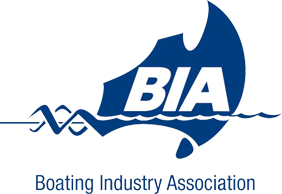Low Friction Rings – 5 Marine Applications
10 January 2023The marine industry utilises a wide array of components to ensure that boats, ships, and other marine vessels can traverse the waters effectively and safely. One of the components they take advantage of are low friction rings.
Low friction rings have been around for a very long time. But to make sure that they can work with their intended applications in the marine industry, manufacturers of these components would have to utilise different materials. Low friction rings today now come in black anodised aluminium, which allows them to be lightweight and resistant to elements. They often feature a big inner radius for low friction and an outer groove for varying line diameters.
The general characteristics of low friction rings allow them to be useful in static or semi-static marine applications. The sharper the angle of the rope that the low friction deflects the lower the safe working load is. Here are some of the most popular marine applications of low friction rings.
1. Turning Block
Turning blocks can work with frequently trimmed lines under high loads. But, if attachment to strong points like cleats and padeyes are available, one can replace turning blocks to low friction rings. This is done is some cases to reduce weight. Friction build-up, however, must be considered when using these rings as they may not be able to release the lines smoothly, especially if they experience high loads. Another aspect that should be considered when using low friction rings to replace a turning block is the type of rope being used, as some polyester lines may not be able to handle the friction, high loads and heat build up produced is fast and repetitive movement.
2. Mast Base Block
Some masts may already be crowded with blocks. And to free up their spaces, one can invest in low friction rings. The main and spinnaker halyards can take advantage of roller blocks. Low friction rings, alternatively, can be used if the genoa will only be raised and lowered at the start and end of the season/race. They can also be used if the genoa is on a furler.
3. Vangs and Adjustable Backstays
Low friction rings can work well with semi-static purchase systems. Therefore, they can be useful in systems found on vangs and adjustable backstays. Their loads can be high, but their adjustments’ movements and size can be small. The rings, at this point, can cascade the purchase systems, roughly halving the load with each ring pulling down on the ring. The smaller rings and the thinner line can then be utilised to increase savings and decrease weight.
4. Furling Lines
Furling lines can also take advantage of low friction rings, which make them a good substitute for seized or twisted blocks. The rings can be attached to an equal number of stanchions to ensure that they can work optimally, especially when the load is little. The load of the furling lines, however, can increase, which can also increase the friction on the rings. Using fewer rings is highly advised to ensure that they can work optimally. Although they can be used in this instance, it is better to used turning blocks in this situation, as friction is minimised, making it much easier to pull on the furling line.
5. Lazy Jack Lines
Less sail chafe is expected when one utilises small low friction rings with thin lazy jack lines compared to using smaller and more expensive blocks. Utilising the rings will also make the system lighter. They can even generate less disturbance to the airflow over the surface.
Low friction rings can truly be significant to marine vessels. To purchase these components for your boat or ship, you can visit our online store at Riggtech. You can likewise contact us if you have some questions about these components.
Optimized by: Netwizard SEO


